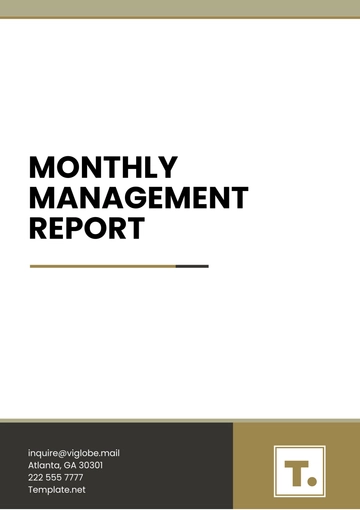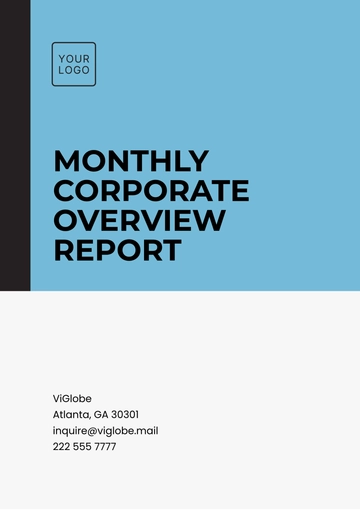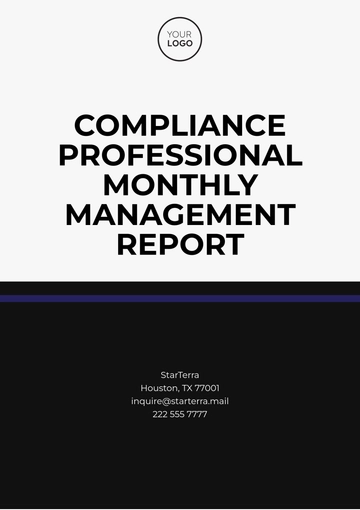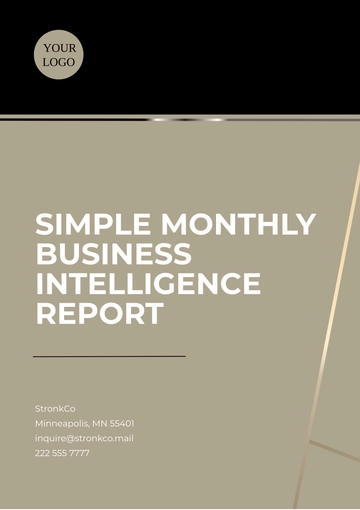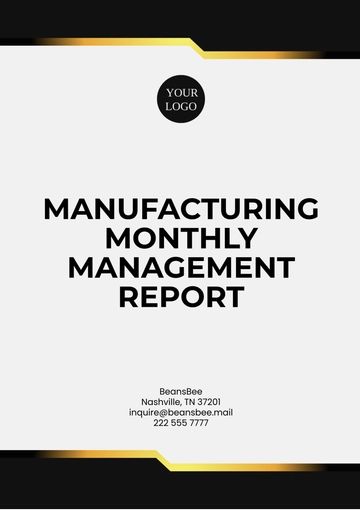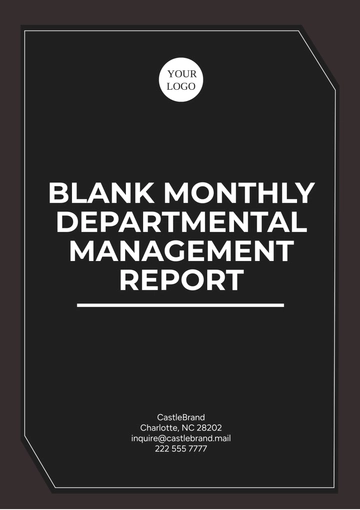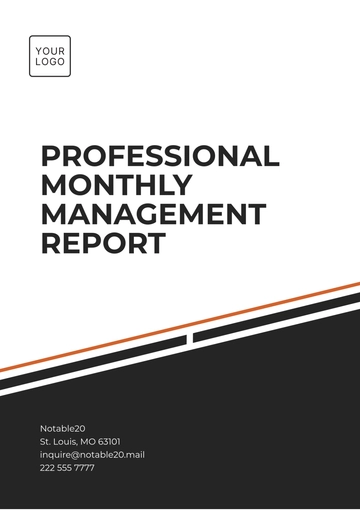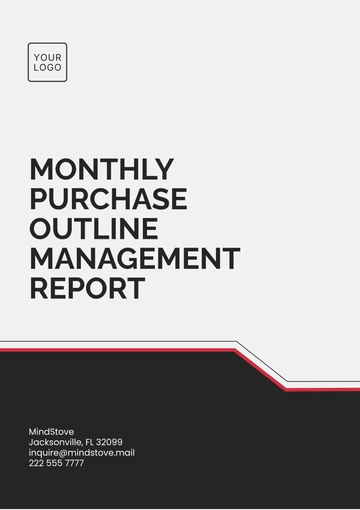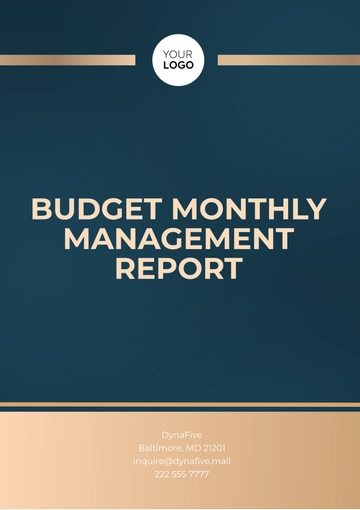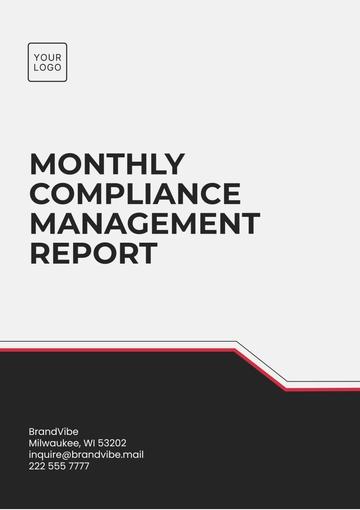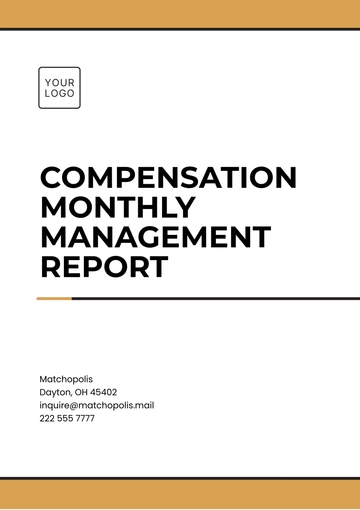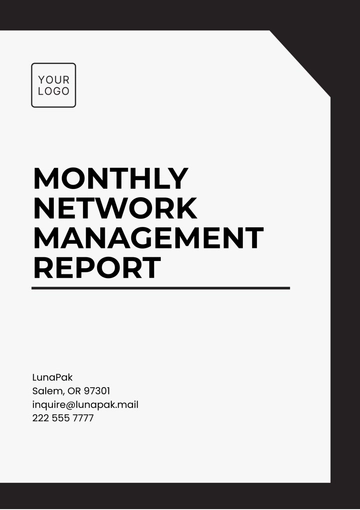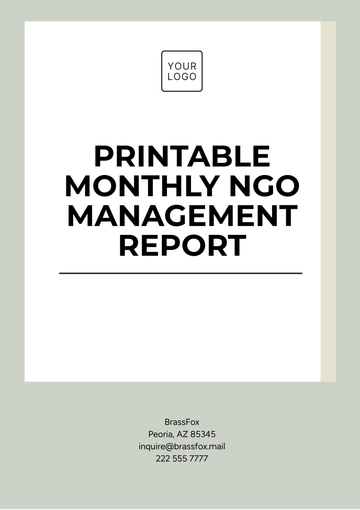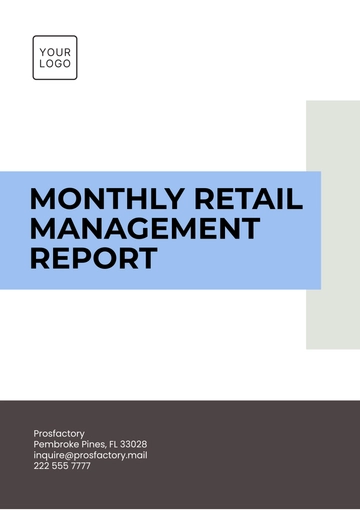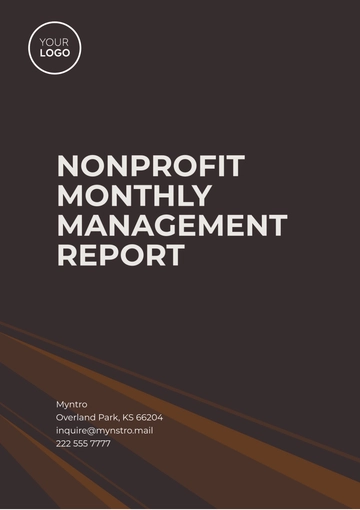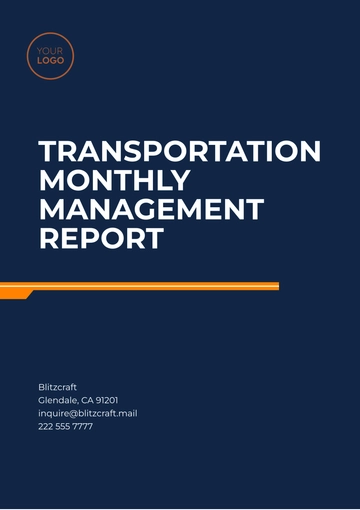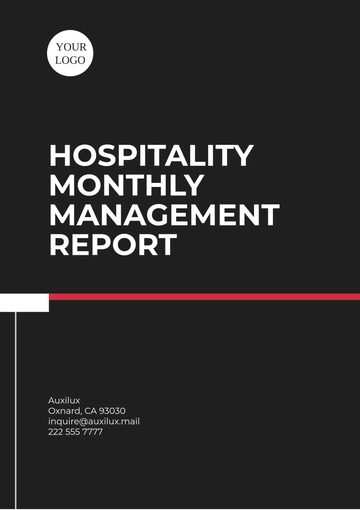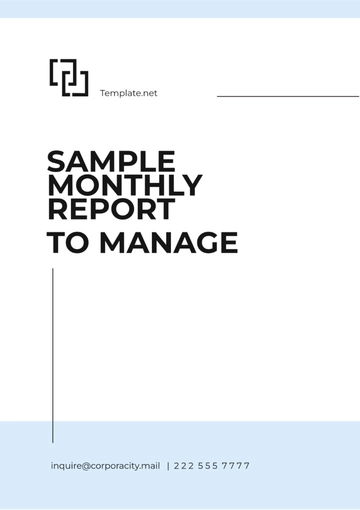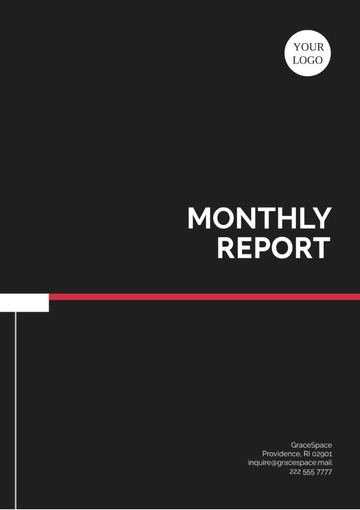Free Monthly Report
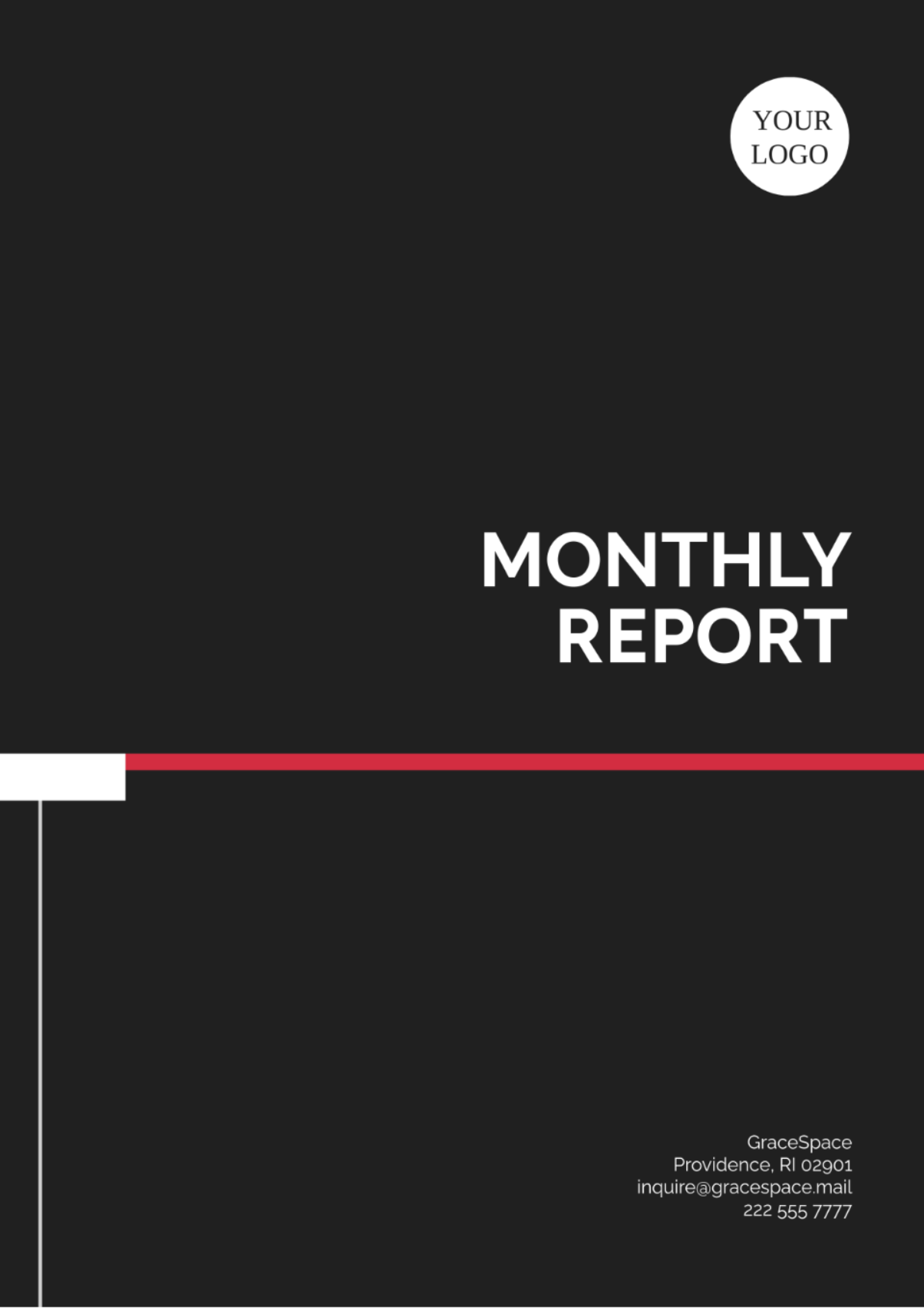
Date: October 2050
Prepared by: [YOUR NAME]
Report Period: October 1 - October 31, 2050
I. Executive Summary
In October 2050, our teams focused on achieving key objectives tied to departmental and project-specific goals. This report summarizes the progress of these goals, evaluates team performance against established Key Performance Indicators (KPIs), highlights challenges faced, and presents action items for November 2050.
Despite minor setbacks in resource allocation and project timeline adjustments, overall performance metrics remain within acceptable limits. Adjustments are proposed to improve both team efficiency and project timelines moving forward.
II. Main Sections
Goals and Objectives
This section outlines the strategic goals and objectives established at the beginning of October 2050.
Monthly Goals Overview
Increase Overall Productivity: Target to boost productivity by 15% compared to September 2050.
Enhance Client Satisfaction: Aim to improve satisfaction ratings by 5% month-over-month.
Optimize Budget Utilization: Ensure all project costs remain under budget by a minimum of 10%.
Reduce Turnaround Times: Decrease average project completion times by 20%.
Goal | Target | October 2050 Performance | Status |
|---|---|---|---|
Overall Productivity | +15% | +12% | Below Target |
Client Satisfaction | +5% | +6% | Exceeded Target |
Budget Optimization | -10% | -8% | Below Target |
Turnaround Time Reduction | -20% | -18% | Below Target |
III. Key Performance Indicators (KPIs)
Tracking KPIs for October 2050 provides insights into team efficiency, project completion rates, and adherence to budget and time constraints.
Team Productivity Metrics
Productivity Index: Measures team output relative to time invested.
Task Completion Rate: Percentage of tasks completed on or before deadlines.
Overtime Hours: Total overtime hours logged by team members.
KPI | October Target | October Actual | Performance Status |
|---|---|---|---|
Productivity Index | 85% | 82% | Below Target |
Task Completion Rate | 90% | 92% | Exceeded Target |
Overtime Hours | <50 hours | 65 hours | Exceeded |
Project-Specific KPIs
This section details the KPIs associated with each active project to monitor adherence to timelines, budgets, and quality standards.
Project Name | Budget Utilization (Target) | Budget Utilization (Actual) | Timeline Adherence | Quality Score |
|---|---|---|---|---|
Project Alpha | 90% | 92% | On Track | 95% |
Project Beta | 85% | 88% | Slightly Delayed | 92% |
Project Gamma | 95% | 97% | On Track | 90% |
IV. Performance Analysis
Productivity Trends
Positive Influences:
Improved Collaboration Tools: Increased efficiency in task coordination.
Streamlined Communication Channels: Faster response times and reduced wait times between task dependencies.
Challenges:
Resource Allocation: Shortages in critical skill areas led to minor project delays.
Employee Turnover: Two team members exited in October 2050, affecting task allocations.
Performance Gaps
Identified performance gaps include:
Lower Productivity Index: 82% vs. 85% target; primarily impacted by unforeseen absences.
Overtime: Exceeded the acceptable limit, driven by last-minute changes in Project Beta’s requirements.
V. Challenges and Risks
Operational Challenges
Resource Scarcity: Demand for specialized roles exceeded available resources, causing workload strain.
Remote Work Limitations: Limited connectivity in certain regions affected project communication and timing.
Risk Assessment
Risk of Burnout: High overtime may lead to lower productivity in the upcoming months.
Budget Overruns: Close monitoring required for Project Gamma to prevent budget breaches in November 2050.
VI. Recommendations / Action Items
Proposed Improvements for November 2050
To address performance gaps and prepare for November’s targets, the following actions are recommended:
Increase Recruitment for Specialized Roles: Immediate hiring to support areas with high demand.
Implement Task Automation: Identify routine tasks suitable for automation to reduce workload.
Optimize Communication Processes: Further streamline meeting schedules to limit interruptions.
- 100% Customizable, free editor
- Access 1 Million+ Templates, photo’s & graphics
- Download or share as a template
- Click and replace photos, graphics, text, backgrounds
- Resize, crop, AI write & more
- Access advanced editor
Unlock streamlined reporting with Template.net’s Monthly Report Template! Fully customizable and editable, this template is designed for easy adaptation to suit any business need. Powered by our AI Editable Tool, it enables seamless personalization, helping you create professional, insightful reports in minutes. Stay organized and on top of your data effortlessly each month!
You may also like
- Sales Report
- Daily Report
- Project Report
- Business Report
- Weekly Report
- Incident Report
- Annual Report
- Report Layout
- Report Design
- Progress Report
- Marketing Report
- Company Report
- Monthly Report
- Audit Report
- Status Report
- School Report
- Reports Hr
- Management Report
- Project Status Report
- Handover Report
- Health And Safety Report
- Restaurant Report
- Construction Report
- Research Report
- Evaluation Report
- Investigation Report
- Employee Report
- Advertising Report
- Weekly Status Report
- Project Management Report
- Finance Report
- Service Report
- Technical Report
- Meeting Report
- Quarterly Report
- Inspection Report
- Medical Report
- Test Report
- Summary Report
- Inventory Report
- Valuation Report
- Operations Report
- Payroll Report
- Training Report
- Job Report
- Case Report
- Performance Report
- Board Report
- Internal Audit Report
- Student Report
- Monthly Management Report
- Small Business Report
- Accident Report
- Call Center Report
- Activity Report
- IT and Software Report
- Internship Report
- Visit Report
- Product Report
- Book Report
- Property Report
- Recruitment Report
- University Report
- Event Report
- SEO Report
- Conference Report
- Narrative Report
- Nursing Home Report
- Preschool Report
- Call Report
- Customer Report
- Employee Incident Report
- Accomplishment Report
- Social Media Report
- Work From Home Report
- Security Report
- Damage Report
- Quality Report
- Internal Report
- Nurse Report
- Real Estate Report
- Hotel Report
- Equipment Report
- Credit Report
- Field Report
- Non Profit Report
- Maintenance Report
- News Report
- Survey Report
- Executive Report
- Law Firm Report
- Advertising Agency Report
- Interior Design Report
- Travel Agency Report
- Stock Report
- Salon Report
- Bug Report
- Workplace Report
- Action Report
- Investor Report
- Cleaning Services Report
- Consulting Report
- Freelancer Report
- Site Visit Report
- Trip Report
- Classroom Observation Report
- Vehicle Report
- Final Report
- Software Report
